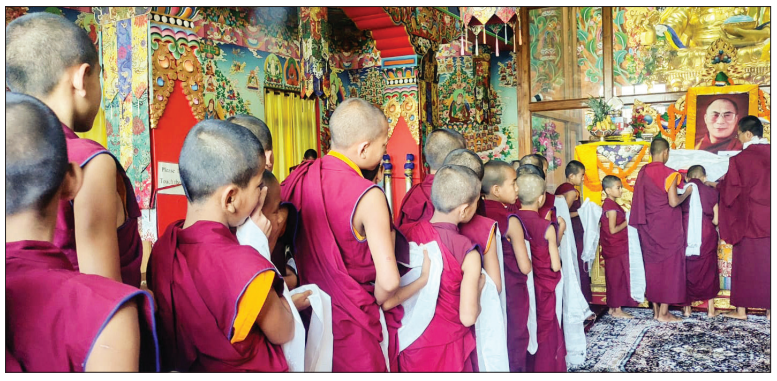The focus on Mandarin Chinese and Han cultural norms has resulted in Tibetan children losing proficiency in their native language.
The situation in Tibet is complex and sensitive, with various reports indicating efforts by the Chinese government to assimilate Tibetan culture into the dominant Han culture. Here are some key points based on recent information: China’s approach to education in Tibet has raised significant concerns regarding the forced assimilation of Tibetan children. Approximately one million Tibetan children have reportedly been separated from their families and placed into government-run boarding schools.
The educational content in these schools is centered around the majority Han culture, with Mandarin Chinese (Putonghua) as the medium of instruction. This system is seen as a large-scale program intended to assimilate Tibetans into Han culture. The focus on Mandarin Chinese and Han cultural norms has resulted in Tibetan children losing proficiency in their native language and, consequently, the ability to communicate effectively with their elders, contributing to the erosion of their Tibetan identity. The increase in boarding students is partly due to the closure of rural schools in Tibetan areas, replaced by township or county-level schools that primarily use Mandarin Chinese for teaching and communication, often requiring children to board.
These measures are part of what some experts describe as a policy of forced assimilation, which runs contrary to international human rights standards concerning education, linguistic and cultural rights, and freedom of religion or belief.
Religious repression in Tibet has been a subject of international concern. The Chinese constitution states citizens “enjoy freedom of religious belief,” but limits protections to “normal religious activities” without defining “normal.” Regulations stipulate religious activity must not harm national security and control all aspects of Tibetan Buddhism. The Chinese Communist Party (CCP) promotes “Sinicization” policies that aim to interpret religious ideas in accordance with CCP ideology and emphasize loyalty to the CCP and the state.
There have been reports of forced disappearances, arrests, torture, physical abuse, and prolonged detentions without trial of individuals due to their religious practices. Individuals have reportedly died in custody or as a result of long-term illnesses and injuries suffered following beatings and mistreatment during incarceration. Authorities have destroyed Tibetan religious sites outside the Tibet Autonomous Region (TAR). For example, the Fuyan Temple, a 1,000-year-old Tibetan Buddhist Temple in Jinzhong City, Shanxi Province, was demolished.
The government has undertaken a large-scale campaign of “reeducation” or “vocational training” in military-style camps to conduct forced political indoctrination and to transform traditional farmers and herders into laborers in other industries. Authorities have arrested multiple writers, singers, and artists for promoting Tibetan language and culture. Supporters of the Dalai Lama and other religious leaders could be arrested under the government’s anti organized-crime program.
Religious freedom in Tibet is being suppressed. Religious repression in Tibet is a serious issue, with various reports highlighting restrictive measures imposed by the Chinese government. The government has conducted a campaign of “reeducation” or “vocational training” in military-style camps for political indoctrination and to transform traditional farmers and herders into laborers in other industries. Writers, singers, and artists promoting Tibetan language and culture have been arrested.
These are challenges faced by Tibetans in practicing their religion and maintaining their cultural identity and reflect concerns raised by various human rights organizations and independent experts regarding the preservation of Tibetan culture and identity.

